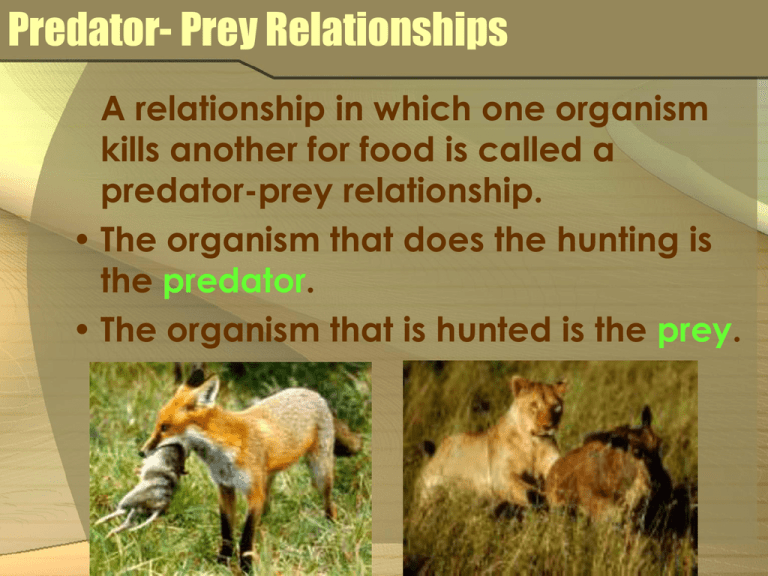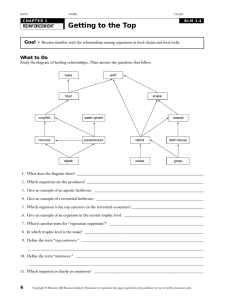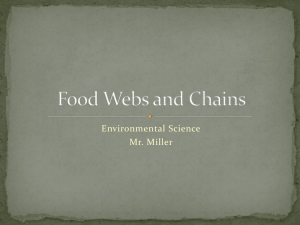Ecology PP
advertisement

Predator- Prey Relationships A relationship in which one organism kills another for food is called a predator-prey relationship. • The organism that does the hunting is the predator. • The organism that is hunted is the prey. Food chain vs. Food Web The path of energy that shows feeding relationships between organisms is called a food chain. Since most animals feed at several levels, their paths interconnect, forming a food web. Roles in the Ecosystem An organism’s role in the environment is called its niche. Producers (Autotrophs): capture energy from the sun, convert to organic material – plants. Ex. Plants, Bacteria, Algae Consumers (Heterotrophs): organisms that gain their energy from eating other organisms. Cannot make their own food! Trophic Levels Trophic levels are the feeding position in a food chain. Green plants, which are producers, form the first trophic level. Consumers form the second trophic level (herbivores), while carnivores and omnivores form the third and even the fourth trophic levels. Detritovores eat all dead things. 4 types of Consumers • 1. Carnivore • Eat only meat • 2. Herbivore • Eat only plants • 3. Omnivore • Eat both plants and animals • 4. Decomposer • Breaks down organic matter Think, Pair, Share • What category would the following organisms be classified under? • Producer or Consumer • Carnivore, Herbivore, Omnivore, Detritivore, Decomposer 1. Human 2. Horse 3. Mouse 4. Shark 5. Fungus ARROWS • Arrows are used in a food chain to show THE DIRECTION IN WHICH ENERGY IS MOVING! Food Webs • A series of interconnected food chains Energy Transfer Energy Transfer - as you go up trophic levels, organisms lose energy. An ecosystem can support more primary consumers, than tertiary consumers. Generally, only 10% of the energy is available to transfer to organisms in the next trophic level. Most of it is lost as heat. Trophic Levels • Each step in a food chain/web. • What trophic level is the mouse on? • Which two organisms are producers? Trophic Levels • Energy is always lost as it moves from one trophic level to the next. • Why would energy be lost as it moves from producerconsumer? • Energy is lost through heat during the chemical reactions that break food down • Only 10% of energy is available for organisms of the next trophic level. This is also why there are more organisms on the lower levels of the energy pyramid and only one or two top consumers. There is more energy available at those levels. •Where is the greatest amount of energy concentrated in this pyramid? •Who gets the least amount of energy from the perennial grass? Where do detritivores fit in? • Because they eat dead organisms, they fit in at the top of the energy pyramid/food web. Energy pyramids •If the first trophic level started off with 599,000Kcal, how much energy will go to EACH level above it?







